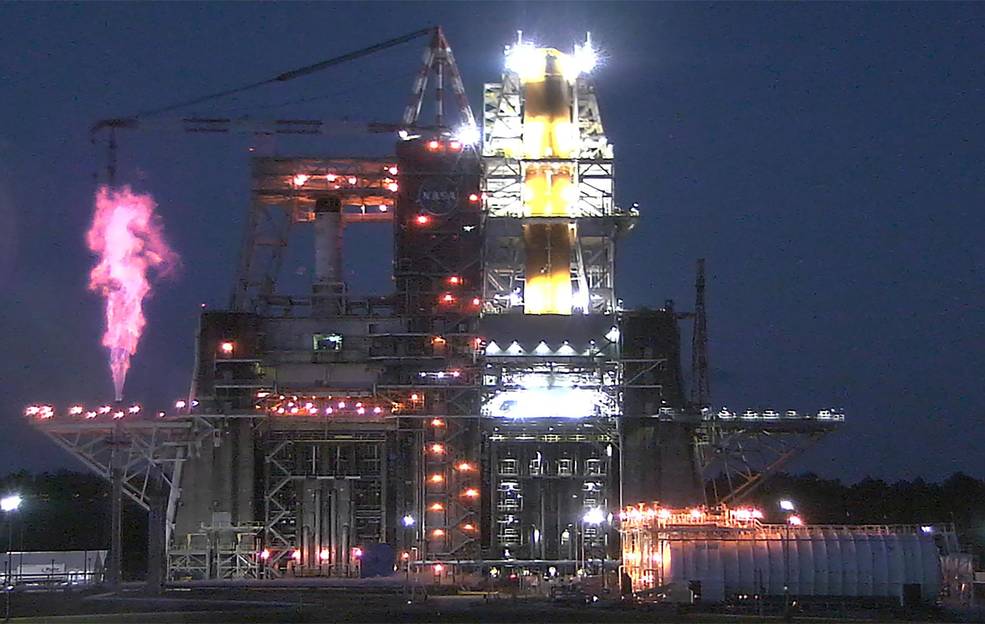Marshall Research Scientist Enables Large-Scale Open Science

By Jessica Barnett
Most people use tools at work, whether it’s a hammer, a pencil, or a computer. Very few seek a doctorate degree in creating new tools for the job.
Using that degree to make it easier for people around the world to access and use the vast amounts of data gathered by NASA? Well, that might just be unheard of if you didn’t know someone like Rahul Ramachandran, a senior research scientist in the Earth Science branch at NASA’s Marshall Space Flight Center.
“My undergrad was in mechanical engineering. I wanted to do industrial engineering, so I came to the U.S. for that, but I didn’t like the field that much,” Ramachandran explained. “It was by chance somebody suggested meteorology.”
That led him to learn about atmospheric science as well, but it was the 1990s and the technology of the time was very limiting. So, Ramachandran set out to learn more about computers and how to better analyze data.
“The limitations effectively prompted me to get a degree in computer science,” he said. “I now had science, engineering, and computer science in my background. Then, over the years, I got more and more interested in the tools and capabilities that can help not only manage data but also how you extract knowledge from these large datasets.”
Fast forward to today, and Ramachandran is an award-winning scientist helping to ensure the vast amounts of data collected by NASA are accessible and searchable for scientists around the world.
“I never would have thought that I could ever get a job working at an agency like NASA,” he said. “You get to work with some of the smartest people in the world, and you get to work on really hard problems. I think that’s what makes it so intellectually stimulating.”
Over the course of his career, he has worked on many different projects focused on scientific data management, designed frameworks for large scale scientific analysis, and developed machine learning applications. Recently, he worked with team members at IBM Research to create a geospatial AI foundation model that could turn NASA satellite data into maps of natural disasters or other environmental changes. He also established the Interagency Implementation and Advanced Concepts Team (IMPACT) at NASA, which supports NASA’s Earth Science Data Systems Program by collaborating with other agencies and partners to boost the scientific benefits of data collected by NASA’s missions and experiments.
Ramachandran received the 2023 Greg Leptoukh Lecture award for his accomplishments, an honor he attributes in large part to the many collaborators and mentors he’s had over the years.
During his presentation, Ramachandran spoke about the ways in which artificial intelligence can help NASA continue to adapt and support open science.
“We’ve seen what people can do with ChatGPT, which is built on a language foundation model, but there are AI foundation models for science that can be adapted into analyzing scientific data so we can augment what we are doing now in a much more efficient manner,” he said. “It requires a bit of a change in people’s mindset. How do we rethink our processes? How do we rethink a strategy for managing data? How will people search and analyze data information differently? All those things have to be thought of with a different perspective now.”
Such work will have benefits not only for NASA but for those who use the data collected by the agency. Ramachandran said he recently got an email from someone in Africa who was able to use NASA’s data and the geospatial AI foundation model for detecting locust breeding grounds on the continent.
“NASA has produced valuable science data that we make available to the community to use,” Ramachandran said. “I think the future would be that we not only provide the data, but we also provide these AI models that allow the science community to use the data effectively, whether it’s doing basic research or building applications like the locust breeding ground prediction.”
As that future nears, Ramachandran and his team will be ready to help others in the science community find the data they need to learn and build the tools they’ll use for years to come.





